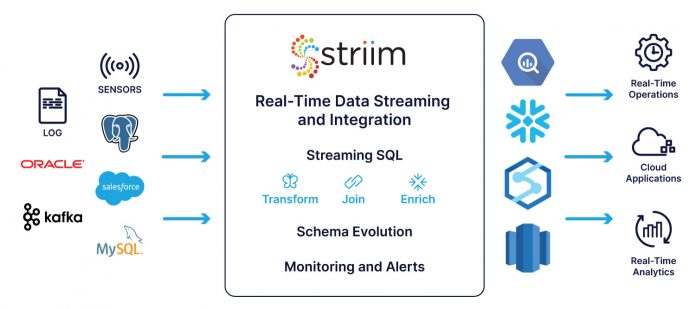Batch-based data integration is for yesterday’s news
Batch-based data integration entails storing all data in a single batch and moving it at scheduled periods, or only once a certain amount is collected.
To be fair, it still does have its uses, such as:
Processing electric consumption for billing purposes once a month
Credit card transaction processing
Maintaining an index of company files
But can you imagine trying to hail a ride share but only being able to book hours ahead of time?
Or trying to play online multiplayer games with hours-long lags?
Or trading stocks based on prices minutes or hours ago?
Truth is, if you want to react to what’s happening NOW, you need real-time data integration, where data is processed and transferred the instant it’s collected.
Four Reasons You Need Real-Time Data Integration
Real-time data integration enables fast decisions
By 2023, there will be over 5 billion internet users and 29.3 billion networked devices, each producing ever-larger amounts of different types of data. Real-time integration allows companies to act quickly on this information.
Data from on-premises and cloud-based sources can easily be fed, in real-time, into cloud-based analytics built on, for instance, Kafka (including cloud-hosted versions such as Google PubSub, AWS Kinesis, Azure EventHub), Snowflake, or BigQuery, providing timely insights and allowing fast decision making.
And speed is becoming a critical resource. Detecting and blocking fraudulent credit card usage requires matching payment details with a set of predefined parameters in real time. If, in this case, data processing took hours or even minutes, fraudsters could get away with stolen funds. But real-time data integration allows banks to collect and analyze information rapidly and cancel suspicious transactions.
Companies that ship their products also need to make decisions quickly. They require up-to-date information on inventory levels so that customers don’t order out-of-stock products. Real-time data integration prevents this problem because all departments have access to continuously updated information, and customers are notified about sold-out goods.
Real-time data integration breaks down data silos
When deciding which types of data integration to use, data silos are another obstacle companies have to account for. When data sets are scattered across ERP, CRM, and other systems, they’re isolated from each other. Engineers then find it hard to connect the dots, uncover insights, and make better decisions. Fortunately, real-time data integration helps businesses break down data silos.
From relational databases and data warehouses to IoT sensors and log files, real-time data integration delivers data with sub-second latency from various sources to a new environment. Organizations then have better visibility into their processes. Hospitals, for example, can integrate their radiology units with other departments and ensure that patient imaging data is shared with all stakeholders instead of being siloed.
Real-time data integration improves customer experience
Your support reps can better serve customers by having data from various sources readily available. Agents with real-time access to purchase history, inventory levels, or account balances will delight customers with an up-to-the-minute understanding of their problems. Rapid data flows also allow companies to be creative with customer engagement. They can program their order management system to inform a CRM system to immediately engage customers who purchased products or services.
Better customer experiences then translate into increased revenue, profits, and brand loyalty. Almost 75% of consumers say a good experience is critical for brand loyalties, while most businesses consider customer experience as a competitive differentiator vital for their survival and growth.
Real-time data integration increases productivity
Spotting inefficiencies and taking corrective actions is another important goal for today’s companies. Manufacturers, for instance, achieve this goal by deploying various improvement methodologies, such as Lean production, Six Sigma, or Kaizen.
Whichever of those or other productivity tactics they choose, companies need access to real-time data and continuously updated dashboards. Relying on periodically refreshed data can slow down progress. Instead of tackling problems in real time, managers take a lot of time to spot problems, causing unnecessary costs and increased waste.
Therefore, the key to optimizing business productivity is collecting, transferring, and analyzing data in real time. And many companies agree with this argument. According to an IBM study, businesses expect that fast data will allow them to “make better informed decisions using insights from analytics (44%), improved data quality and consistency (39%), increased revenue (39%), and reduced operational costs (39%)
Real-time Data Integration Requires New Technology: Try Striim
Real-time data integration involves processing and transferring data as soon as it’s collected using change data capture (CDC), transform-in-flight, and other technologies.
CDC involves tracking the database’s change logs and then turning inserts, updates, and other events into a stream of data applied to a target database. In many situations, however, data needs to be delivered in a specific format. That’s where the transform-in-flight feature comes into play as it turns data that’s in motion into a required format and enriches it with inputs from other sources. Data is delivered to the master file in a consumable form and is ready for processing.
As a unified data integration and streaming platform, Striim connects data, clouds, and applications with real-time streaming data pipelines.
Striim is a real-time data integration platform that connects over 150 data sources and targets across hybrid and multi-cloud environments. Striim offers high-performance CDC from open-source and commercial database systems, plus in-flight data transformations, enrichment, filtering, and more. With clients like Macy’s achieving sub-200 millisecond end-to-end latencies, Striim can ensure that you have fresh, analytics-ready data at your fingertips. What are you waiting for?
Try Striim for free or request a demo with a real-time data integration expert.
Read MoreStriim


